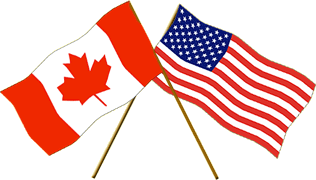drsclafani wrote:Dr Sclafani wrote. i disagree that multiple angioplasties are not possible. I have no evidence or experience that shows that patients veins do not tolerate more than one angioplasty. I am truly sorry that your experience was so dismal. But it is not the experience that i have had
dania wrote:I am now so confused. In Oct 2010 Dr Siskin told me that every time the catheter is run in the vein it does a little damage. And in Jan 2011 Dr Arata told me that a patient get the best and most improvements with the first angioplasty. Some see no change with repeat angioplasties.
Dear Dania
These statements may be confusing, but i see them as compatible.
For example every time you scraped your knee as a kid, you may have bled and injured your knee. But that does not mean you now have arthritis in your knee. Angioplasty is by definition a "controlled" injury of a vessel. Simply stretching the vein results in separation of the endothelial cellular lining. That controlled injury typically heals if managed by respecting the effects of that injury. Stretching the endothelial layer leaves gaps that expose the muscle layer of the vein to circulating blood. In a response, the muscle cells send out signals that protect the individual from "hemorrhaging to death" by causing clot to form and by instructing the platelet cells to stick to each other and to the damaged wall. This is done because the muscle cells believe that this angioplasty injury to the venous wall is full thickness which it is not. We know better and can blunt this healthy protective mechanism by using anticoagulation and inhibiting platelet stickiness.
Of course it is also possible that balloon angioplasty can cause full thickness injury if oversized and this may result in thrombosis or fibrosis of the surrounding hemorrhage. These are definitely injuries to be avoided. By precisely measuring the vein dimenstion, one can usually select a balloon that is less likely to injure the vessel wall.
When most IRs started treating these veins in 2010, they were unsure of how large a balloon to use. It was becoming clear quite that the balloon size we expected to use was smaller than we actually needed. We were basing our balloon sizing on veins that were stenosed by scarring which requires smaller balloons. Recommendations from those who started treatments earlier than the majority of us, suggested things like 18-20 mm balloons in woman and 20-24mm in men, use of cutting wires were also advised. These were very damaging. Moreover anticoagulation utilization was unclear. Some used no or very short term anticoagulation (remember patients were traveling long distances to reach their interventionalist.). It wasn't clear to me until january-february of 2011, by the use of IVUS, that the stenoses were caused by immobile valves not stenosed veins. and that larger balloons could be used
In response to injuries and occlusions, many treating doctors played it safe, using smaller balloons that would not injure the vessels. Not surprisingly this incomplete treatment resulted in very short term improvements caused by opening the valve obstructions only for a short time before restenosis occurred. When restenosis was treated by smallish balloons again, it is not surprising that improvements would be limited.
I would say that i have treated more patients who had been treated previously by others than patients who had never been treated. If you recall, i was stopped from doing procedures after about 25 patients back in April 2010. By the time i returned to treatment full time, nine months had elapsed and many patients had been treated with, as you can imagine, short term benefits or problems with occlusions. In the beginning I also had a fair number of thromboses. However rather than move to smaller balloons as was so tempting, i persisted and worked out my algorithm using cross sectional area of the vein to select my balloon size. so i continue to use fairly large balloons, averaging at 14.5 mm with range from 8mm to 24 mm. My occlusion rate is fairly low at this time and early detection has allowed salvage of about half of those.
I have therefore treated many patients who were underdilated before and in some improvements have been better than the first time. treatment remains a "crapshoot" with unpredictable results. But many of my best improvements have come in patients who had improvement from prior treatments that required another treatment.
So sorry for the confusion you feel. I hope i have enlightened you and reduced your confusion
DrS



